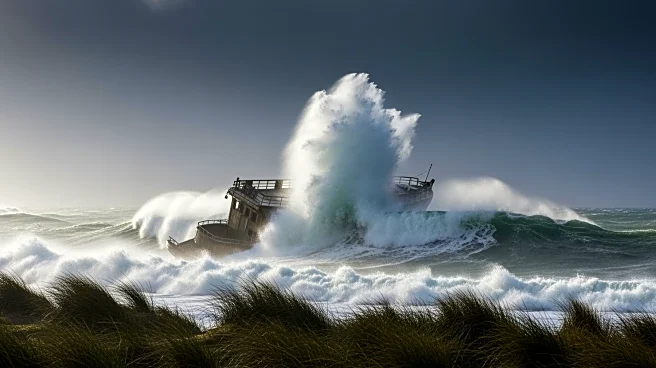What's Happening?
A severe snowstorm in Chilean Patagonia resulted in the deaths of five tourists from Mexico, Britain, and Germany. The incident occurred on a popular hiking trail in Torres del Paine National Park, known
for its challenging terrain and unpredictable weather. The hikers were caught in a blizzard with winds reaching 120 miles per hour, leading to hypothermia and injuries among the group. Chilean authorities have launched an investigation into the incident, taking statements from park staff and other witnesses present during the storm. The Chilean government is coordinating with consulates to repatriate the bodies of the deceased.
Why It's Important?
The tragedy underscores the risks associated with outdoor activities in remote and extreme environments. It highlights the need for improved safety measures and emergency response protocols in national parks, particularly those frequented by international tourists. The incident may prompt a review of park management practices and the adequacy of warnings provided to visitors about potential weather hazards. It also raises awareness about the importance of preparedness and caution when engaging in adventure tourism.
What's Next?
Authorities are likely to enhance safety guidelines and emergency preparedness in Torres del Paine National Park to prevent future incidents. The investigation may lead to recommendations for better communication of weather forecasts and the provision of safety equipment for hikers. The tragedy could influence tourism policies in Chile, with potential implications for park operations and visitor management. Stakeholders, including tour operators and environmental groups, may advocate for stricter regulations and improved infrastructure to ensure visitor safety.
Beyond the Headlines
The incident highlights broader environmental and ethical considerations related to tourism in fragile ecosystems. It raises questions about the balance between promoting tourism and preserving natural landscapes, as well as the responsibilities of governments and businesses in ensuring visitor safety. The tragedy may prompt discussions about sustainable tourism practices and the need to protect both visitors and the environment in popular tourist destinations.













